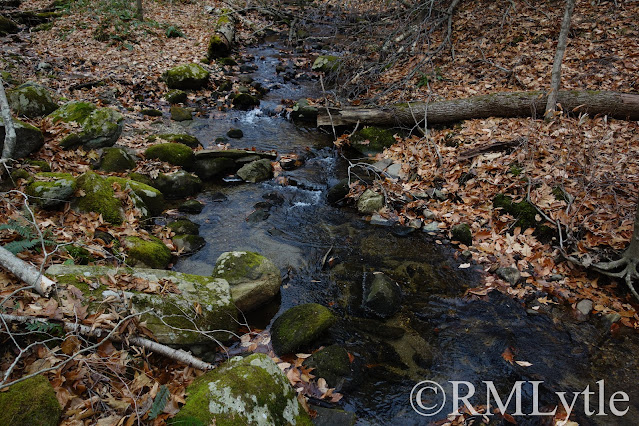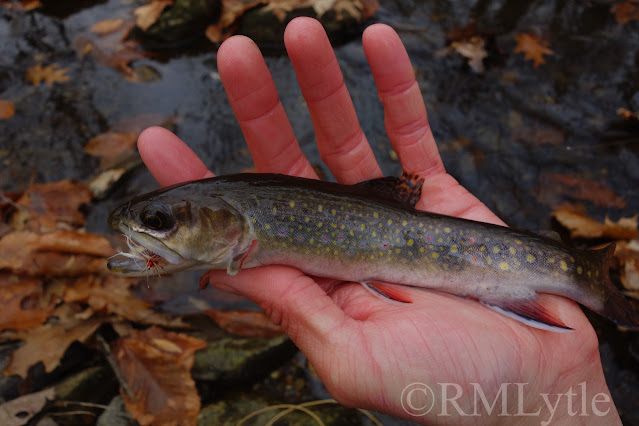Perched culverts are a hot topic in fish conservation and for good reason. Culverts are a problem. In many cases they prevent fish passage, cutting off populations from substantial segments of historic habitat and limiting genetic exchange within and between streams. Fish passage is the most well known and talked about issue with culverts, so I don't feel there's much I can add to it that you haven't heard trot out at least once already. Instead, I would like to offer my opinions and some of the facts on why perched culverts and other small, man-made fish passage barriers, might actually be a good thing..
Nonnative fish benefit from restored fish passage just as much as native fish do, sometimes to the detriment of those native fish. There are some clear examples, particularly in Western US native trout populations. Barriers both natural and man made have either saved or allowed for the reintroduction of Gila trout in Arizona and New Mexico and have prevented the loss of native golden trout in the upper Kern basin in California. Matthew Miller discusses one such example in his fantastic book, Fishing Through the Apocalypse, a case in which ash from a wildfire lead to the extirpation of brown trout in a stream, allowing for the reintroduction of native Gila trout. Non-native species were still present further down the watershed, so a dam was built in order to stop them re-colonizing waters that were soon filled with the fish that had evolved there in the first place.
The question becomes; is the trade-off of an artificial barrier being created or simply being allowed to remain present in a stream a justifiable conservation strategy. This is something Miller ponders, and he and I both come to the same conclusion. "The lines become blurry, but I’ll take the native fish. I want there to be as little human influence as possible in the Gila wildernesses, but we’re going to have to make decisions..."
How much of an issue is this in Connecticut, though? Well, things get muddy here as it is genuinely very hard to find an example of water that isn't inhabited by nonnative fish. But there are some examples. A tributary of the Farmington River where a perched culvert separates brown trout from an allopatric brook trout population, a barrier on another small stream that separates slimy sculpins from brown trout, and a dam that keeps largemouth bass and bluegills out of brook trout and redfin pickerel habitat are all examples I've personally seen. There are lots of small culverts and dams in CT, and each should be looked at as its own case. Is it worth maintaining a barrier to separate non-native from native, or will the benefit removal or re-construction outweigh that? Those questions need to be asked every time a barrier is under question to be removed or rebuilt.
Another point came to me a couple months ago as I surveyed potential wild trout streams in Northeastern CT. One stream I came across that had a confirmed brook trout population as recently as 2012 was simply so small I had a hard time imagining how they could persist there. It was clearly very intermittent, as most of the longer, slower pools were filled with leaf litter and sediment and no more than a few inches deep- the flow was not substantial enough to clear out sediments. I walked a long length of it without seeing brook trout or any particularly ideal brook trout habitat, at least not permanently habitable brook trout habitat.
Then I came to a culvert pool. Though not perched, this culvert featured an angled concrete floor that created sheet flow, only about 1/3 of an inch deep. This isn't good fish passage, though in the right conditions a brook trout might successfully make it above. More notably, like many culvert pools this one featured a deep, round pool, the only one I'd seen so far that would certainly persist through the sort of droughts we've experienced here in CT in recent years. Unsurprisingly, I found the pool to be loaded with brook trout. Apparently the stream's entire population or at least most of it was occupying this hole.
Until next time,





A great read, and indeed, a lot to think about for what is best for the brook trout. There are people who would take their fill of trout over a season or less and not think twice about it. Luckily where I live there is a small stream that is so impenetrable with undergrowth no one can get in there, and that includes me. As long as development doesn't wreck it, those brookies should secretly be in there for a long time.
ReplyDeleteAs someone who lives in another state and visits off-the-beaten-path natural wonders of Connecticut as an outlander, reading this thoughtful, well-researched essay makes me think a wider audience should be aware of it -- particularly Connecticut DEEP and both fisheries and highway department officials. Any chance those of you with a vested interest would copy and send to your home state media outlets, elected representatives, or governmental officials? Who else speaks for Wildlife?
ReplyDeleteLots to think about here. Many of my favorite streams have man made features (culverts and dams) as well as waterfalls on them that limit the movement of fish. I am often surprised that isolated headwaters of such streams support brook trout that have managed to hang in there in spite of all the factors aligned against them.
ReplyDelete